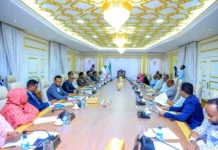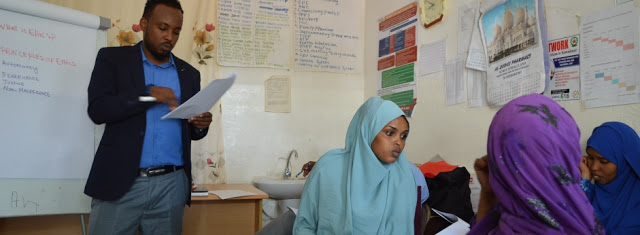Somalia and Somaliland’s health indicators are some of the worst in the world, with health systems in nascent stages of development in this post-conflict, fragile set of states. Within this climate and culture, women’s health is a particular challenge
Population Services International is currently implementing the Demand Creation for Health Services component of DFID’s Somali Health and Nutrition Programme (SHINE). ThinkPlace was engaged to employ a human-centered design process to build the evidence base about what works and what doesn’t when it comes to improving health behaviors among Somali women.
We looked at designing interventions that were focused on driving demand for nutrition, antenatal care and family planning services.
In order to build a comprehensive evidence base and support knowledge-sharing, ThinkPlace designed an innovative brainstorm platform dubbed the ‘Innovation Lab’.
The lab brought together users, consultants in nutrition, family planning and ANC sectors, Somaliland public health sector representatives as well as a variety of organisations who are active in the region to together learn what works and participate in designing interventions.
In addition to encouraging more diverse perspectives and collaborations around designing health interventions for Somali women, the Innovation Labs have significantly contributed towards entrenching the buy-in that is necessary to ensure new interventions can be effectively implemented.
What we did
From the initial sprint alone, more than 14 prototypes were built and tested.
Some of the prototypes we developed during the initial prototyping sprint aimed at driving uptake of antenatal care services included a birth preparedness class, an infant bracelet and an ANC booklet.
ThinkPlace also designed targeted messaging interventions that would subtly drive acceptance and credibility for the idea of birth spacing by using community influencers such as Sheikhs.
We developed cook books and cooking competitions to improve consumption of nutritious foods, as well as an innovative iron ingot dubbed ‘Lucky Camel’ which helps address the high rates of iron deficiency among women in Somaliland.
Developing our ideas
Since this rapid prototyping and testing process, ThinkPlace has worked with PSI to determine a way forward for each prototype, integrating some with others, conducting further research on some of the topics related to the prototypes, and more.
This has led to successful new prototypes such as a birth preparedness class which would serve two key functions – preparing expectant women, typically in the first and second trimesters to carry healthy pregnancies and preparing women in the third trimester for delivery. This approach enabled the team to test for opportunities to drive attendance of antenatal classes all through the pregnancy period as well as drive delivery in health facilities.
ThinkPlace also designed an IVR system as an iteration of the targeted birth spacing messages which was intended to help women to seek counseling and report any health-related emergencies. This system would be linked back to public health facilities, therefore supporting the uptake of health services.
Designing for behaviour change
During the research phase, one of the significant deterrents to uptake of health services was recognized as possibility of gossip among health staff.
To address this, we repurposed confidentiality training into an interactive ‘camp’ format, whereby the health staff would be invited to a creative workshop (structured as a ‘summer camp’-like, all-day retreat) and use this as an opportunity to creatively learn about the need for confidentiality. Post the session, the health staff would receive certificates and a ‘badge of honor’ which would enable them to be easily identified as a ‘trusted’ confidant.
Working with local culture
Our research discovered that the low utilisation of health facilities in this region was partly driven by deep seated cultural customs that prevent positive interactions between healthcare workers and users.
For example, the Somali language uses the word for ‘cut’ in reference to Caesarean section. The same word is used for slaughtering animals for consumption in the Somali meat-centric diet. This framing naturally caused apprehension towards uptake of this service, even when it was urgently needed to save the lives of expectant mothers.
In order to tackle this issue, ThinkPlace began to explore opportunities to reframe the Caesarean section using prompts that would make it more acceptable for the process to take place when needed. This included introducing the idea during the birth preparedness class and including expectant fathers into the discussion about this possibility, as early as possible.
Dr. Mohamed Du’ale






































